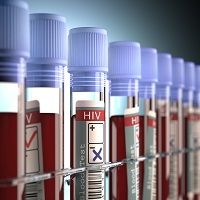Article
Injectable PrEP Protects Women from HIV Transmission
Author(s):
A new, long-lasting pre-exposure prophylaxis (PrEP) prevents human immunodeficiency virus (HIV) infection in a high-risk group.

A new, long-lasting pre-exposure prophylaxis (PrEP) prevents human immunodeficiency virus (HIV) infection in a high-risk group.
Women are more likely to contract HIV from infected men than the other way around. Although there are different forms of PrEP to combat vaginal transmission, such as gels and rings, they have not proven to be effective due to participant adherence issues. But a new PrEP developed by researchers at the University of North Carolina School of Medicine (UNC School of Medicine) and Merck may have solved that problem.
Raltegravir is an oral antiretroviral (ART) medication used to treat HIV. The team redesigned the drug to act as a single, subcutaneous injection in order to prevent the infection. When the injection was tested in animal models, the drug stayed in the system at the same levels as the oral, twice a day version even after two weeks.
- Related: Women Need More PrEP for HIV Prevention than Men
“A single injection of long-acting raltegravir may only be needed every month or every few months to provide protection against HIV infection, which could improve adherence,” lead author Martina Kovarova, PHD, said in a news release.
Combatting HIV in the female reproductive tract has been a challenge with other drugs. Previous research from UNC recently identified how ART impacts the way that HIV establishes itself in the female reproductive tract. Now the single injection showed to significantly suppress viral load in both plasma and cervico-vaginal lavages. Over the course of four weeks, the raltegravir injection proved to protect against multiple strains of HIV, according to the report in the Journal of Antimicrobial Chemotherapy.
“Effective long-acting formulations for HIV prevention represent the next generation of pre-exposure prophylaxis. This is a very exciting new formulation of raltegravir with great potential,” said co-author Victor Garcia, PhD, a professor at the UNC School of Medicine.
Also on MD Magazine >>> Women May Be Naturally Protected from Bone Loss Associated with HIV





